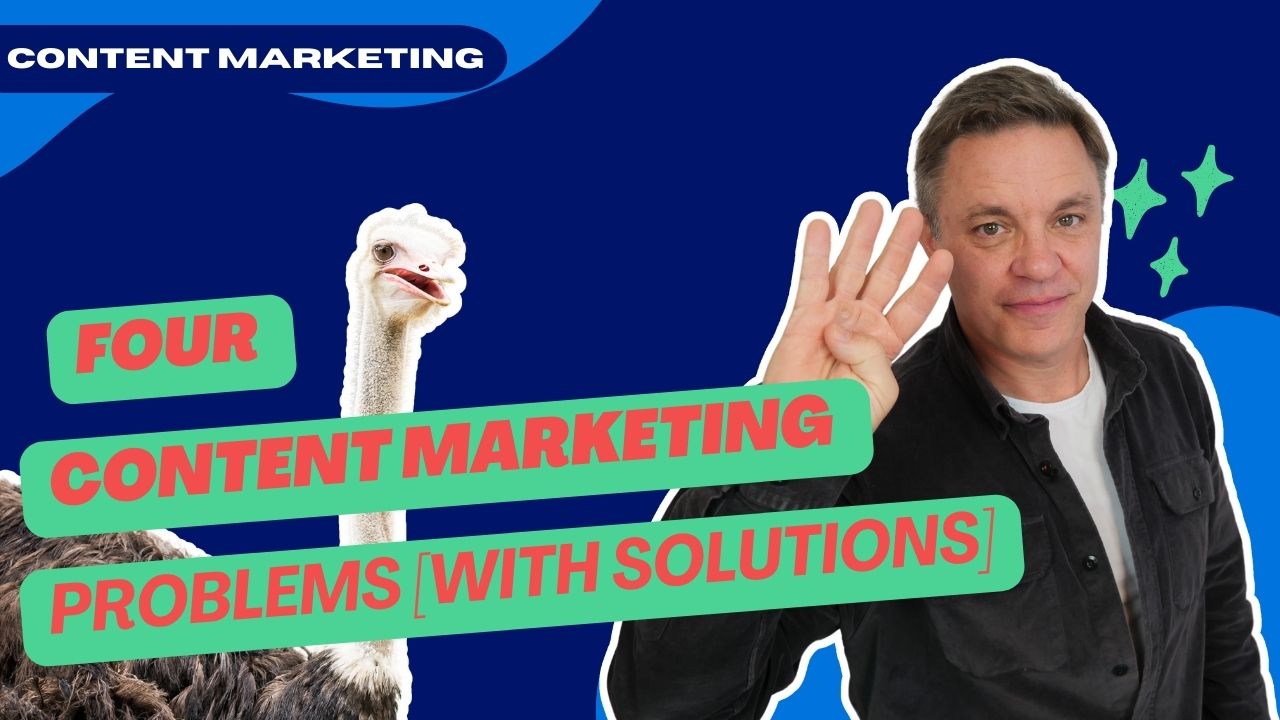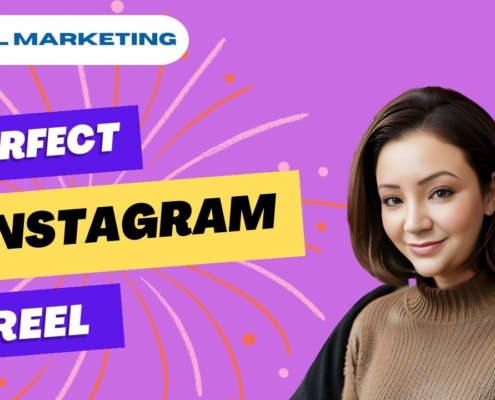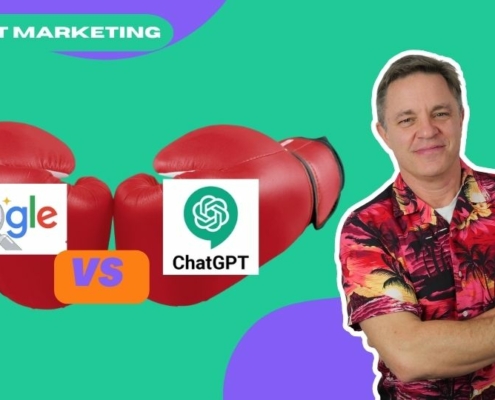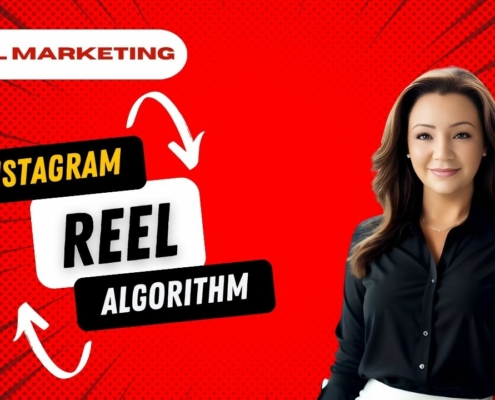On-Page Design
One big inbound marketing problem we see is where the writer’s efforts are thwarted by poor page design. The most well-written blog in the world will fail if it is hard to read. Make sure there is plenty of space on each side so that each line is short and that text is highly contrasted with the background.
Writing style
I have a full article on writing for blogs to avoid inbound marketing problems here. In short you should ensure you have no more than a few sentences before a new subhead. Use short words and simple paragraphs.
Lack of videos
Video content makes up about 80% of people’s online time and is a vital part of your blogging. Get a good basic set-up and record a lot of video – as opposed to outsourcing two a year to a fancy video company!
The mindset that avoids inbound marketing problems
Your job as a content manager or copywriter is to educate people in the buying process.
I know I have mentioned the word buying and the risk is that it may trigger a response which says that you must be selling.
NOPE.
Simply imagine you are helping a friend in the market for a product or service like yours. You would not force your products down a good friend’s throat if it were wrong and in the same way, your copy should be helpful for people who will never buy from you.
You are a kind educator – an unbiased and truthful guide.
You may feel like you are dumbing down the subject. You will not be doing so – what you are doing is talking to clever people who are very busy and not at all informed about your marketplace. Help them.
Content marketing problem 2: No strategy or framework
So now we have a solid idea of how to avoid inbound marketing problems created by executing the content, we now look at problems caused by the substance of your content – i.e. what topics do you address?
Use the best framework for inbound and avoid problems
The one compelling framework for inbound marketing today is in a book called They Ask You Answer by Marcus Sheridan. [Full Disclosure: I loved this book so much that I became a coach for the methodology in the UK.]
The reason why this book and its method has been such a huge success and has taken companies to see exponential growth is that it first lists the five topics you must cover to be successful in inbound marketing:
Discuss price and cost to really stand out from the crowd
Very few companies discuss price on their website, especially if they offer a service in the B2B area.
This is a huge mistake. There is more detail on this in the book and elsewhere on this website, but suffice it to say that Marcus – who was then working for a swimming pool company – decided to write a blog about the price of swimming pools. Not the exact price, but at least a guide to the factors.
His team assumed he had gone mad. Nobody does that. He did.
That one blog has gone on to be instrumental in $25 million of swimming pool sales.
The other topics in brief:
Problems
Clearly, you’ll want to solve any problems with your product or service but people will Google ‘ Problems with [your product], so it is vital that you answer that question. This is a great chance to talk about fit – i.e. who does your product not fit or work for.
WATCH OUT: A lot of inbound marketing problems come down to people trying to fake the idea that their service or product is fabulous for everyone.
Versus and comparisons
Why should people have to leave your site to find out what products compare to yours and how they stack up – keep people on your site and build trust. Think of an Amazon page – I can easily see comparable products, which really helps my experience. It’ll take people just a few keystrokes to find out, so don’t for a moment think that you can hide rivals!
Reviews and Best in Class
Just as above, you might want to think of a page on Amazon and the and elements it contains – these are the things people expect to find when they are researching online. Share reviews of competitors ( never review yourself, never criticise them) and you’ll gain trust from buyers and a ton of Google traffic.
Content marketing problem 3: A slow website and other technical issues.
Over recent years, Google has become increasingly insistent that it will not show people slow websites. Simply check your website here using Google’s own checker. You’ll ideally get a result towards 100, which is green. Amber scores are OK but red is a fail and needs immediate attention.
Other technical issues
Writing as I am for business owners and to help them avoid inbound marketing problems, this article will not go into depth here. The page speed test above may reveal other issues and hooking your website up to Google Analytics may reveal some other issues. In fact, it will – there are always issues – the skill is in knowing which are important.
A good Google Partner Agency can advise you here.
Inbound marketing problem 4: No measurement of success.
With modern tools such as Hubspot it is perfectly possible to see precisely which articles someone has consumed before they get in touch.
If you can’t afford HubSpot get in touch with us and we will supply a simple alternative that shows you time spent and the articles that people read on your site before they filled in a contact form.
Measurement means motivation
There is nothing more exciting than seeing a bunch of clicks coming through from a particular article or seeing it appear time and time again on the list of articles people are reading before they get in touch.
This is truly exciting and there is no greater motivation for your team’s content marketing efforts.
Get measuring today.
Conclusion – The vital steps to avoid inbound marketing problems and find the huge success it offers.
- Get a full digital audit done. Use Google PageSpeed insights, the full Google suite and get the advice of a Google Partner agency. Assure yourself that all the technical reasons content marketing problems have been avoided.
- Follow a framework such as ‘They Ask You Answer’ to give your content efforts a clear focus and to make sure your content is useful for your prospects.
Guarantee Success with your Content Marketing
If you still do not see success then the way to guarantee it is to hire a coach such as myself and my team.
We guarantee that over 18 months we will build in a new ethos and operational success for your inbound marketing and that your business will double in size.
Typically clients see website traffic improve by 1000 – 2000% and leads up in multiples of 100! It’s exciting stuff.
GET IN TOUCH
 https://theambitionsagency.com/wp-content/uploads/2024/03/New-Website-tiles-project.jpg
720
1280
Liyana van Wyk
https://theambitionsagency.com/wp-content/uploads/2022/06/Ambitions-Agency-logo.svg
Liyana van Wyk2024-06-05 12:00:562024-06-05 06:16:28Unlocking the Secrets of SEO
https://theambitionsagency.com/wp-content/uploads/2024/03/New-Website-tiles-project.jpg
720
1280
Liyana van Wyk
https://theambitionsagency.com/wp-content/uploads/2022/06/Ambitions-Agency-logo.svg
Liyana van Wyk2024-06-05 12:00:562024-06-05 06:16:28Unlocking the Secrets of SEO











